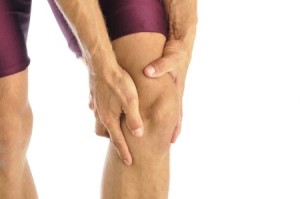Written by Hayden McDevitt, DPT, OCS, CSCS
Article
Do you feel general pain?
 For many reasons, I will never forget the first half marathon I ran. In the spirit of full disclosure I will admit that I was never a runner (and by runner I mean slow jogger who could not hear the music through my ear buds over my own labored breathing). However I decided that with a little training and hard work, a half marathon would be a great challenge to undertake. After months of training, mostly pain-free, I completed a half marathon in Virginia with a time that I was only minimally embarrassed to disclose publically.
For many reasons, I will never forget the first half marathon I ran. In the spirit of full disclosure I will admit that I was never a runner (and by runner I mean slow jogger who could not hear the music through my ear buds over my own labored breathing). However I decided that with a little training and hard work, a half marathon would be a great challenge to undertake. After months of training, mostly pain-free, I completed a half marathon in Virginia with a time that I was only minimally embarrassed to disclose publically.
Along the 13.1 mile course, there were thousands of people cheering on the runners and holding up tons of signs that were a mix of motivation and humor. I remember one in particular that said in GIANT blue letters “Runners, enjoy your pain, you’ve earned it”. I laughed at the time and didn’t think more about it.
About a year or so later, while training for a full marathon, I often thought of that very sign when running became painful and I didn’t listen to my symptoms. I tried to continue running for a few weeks through foot pain by simply being, as my mother would put it, “a knucklehead”. As the pain got worse — which I would later learn was a stress fracture — I realized that some pain isn’t worth earning.
We’ve all heard the mantra “No pain, No gain”. I’ve heard this phrase thrown around since my days of little league baseball, long before coaches monitored pitch counts and days’ rest for young growing arms. It’s popular in locker rooms, post-workout chats and even some physical therapy offices. The question we have to ask though is “Does this long held belief hold up when it comes to exercise? Sure it sounds great, heck it even rhymes, but does it still apply to individuals who are looking to get healthy and treat their bodies a little better in 2014? ”
Pain has a protective function in our bodies. Pain helps tip us off to tissue damage that is occurring and allows us the opportunity to change our activity so we may allow our bodies’ adequate time to heal. When exercising, it is normal to feel that deep burn in your muscles as lactic acid, a natural byproduct of muscle contraction, accumulates.
Pain is not a normal byproduct of exercise. Typically after an appropriate workout, you can expect to experience what is known as delayed onset muscle soreness. Most commonly experienced 24-48 hours after a good workout, this is simply soft tissue inflammation caused by asking your body to do more than it is accustomed to doing. If you experience no soreness, you can probably ramp it up a bit. If you’re sore for greater than 48 hours, you likely overdid it. When you experience pain sooner than 24 hours after your workout, it is an indicator that you are doing something incorrectly.
If you are having pain, consider getting it checked out by a physical therapist. Physical therapists are experts in how the body moves and can evaluate your pain to determine good vs bad and get you started on the path to exercise health.
Signs You May Have Injured Yourself
- The pain you are feeling is sharp.
- The pain you are feeling is shooting or accompanied by
numbness, tingling, pins and needles. - There is a sudden onset of pain.
- The pain developed in association withpopping, clicking,
snapping or giving way underneath you.
~ Hayden McDevitt, DPT, OCS, CSCS, ART

